After an early lunch I left home on a very dull, misty late morning. It wasn’t long until I was at the start of Hoddle St and I turned left and followed Hoddle St around walking under the Heidelberg Rd overpass, past the Clifton Hill railway station and down Hoddle St as this was the most direct way to MSAC – Melbourne Sports and Aquatic Center- in Albert Park. Not having a great sense of direction, the easier is the better for me and even then I often get lost. Walking on from the station and across at the first cross road is Darling Gardens.

Even in its’ winterscape it is a lovely garden with paths leading to a pretty central rotunda. Several tree lined paths criss cross the Gardens, the remaining areas are beautifully manicured lawns. The Gardens have an unusual history. It was first reserved for public use in 1863. At various times in the 1860’s and 70’s it was leased for grazing and used for the dumping of night soil. The Gardens were often used for fetes, music and sporting events up until 1907 when a community tree planting effectively changed the use of the gardens.
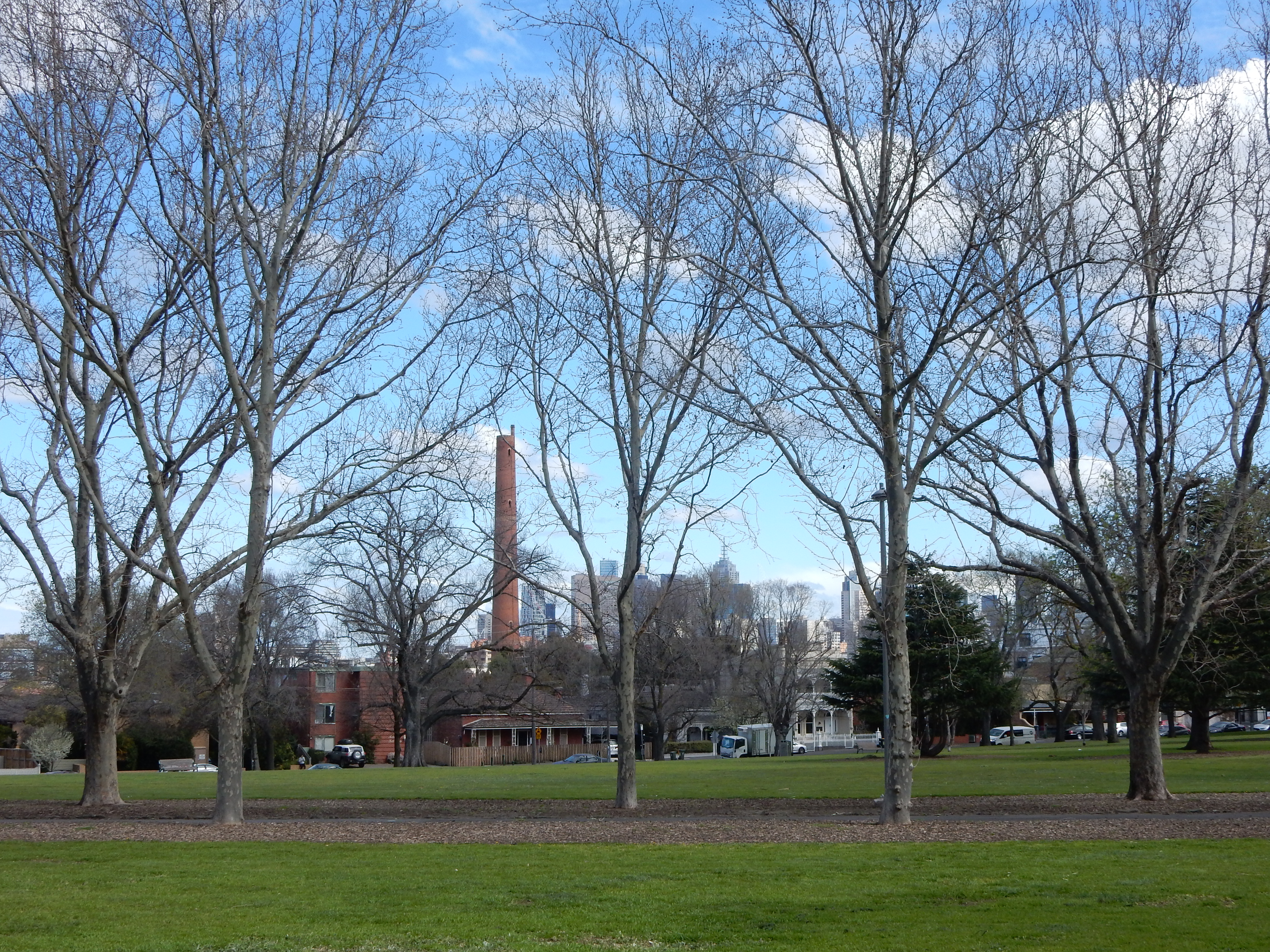
From the Darling Gardens the Shot Tower still stands tall.
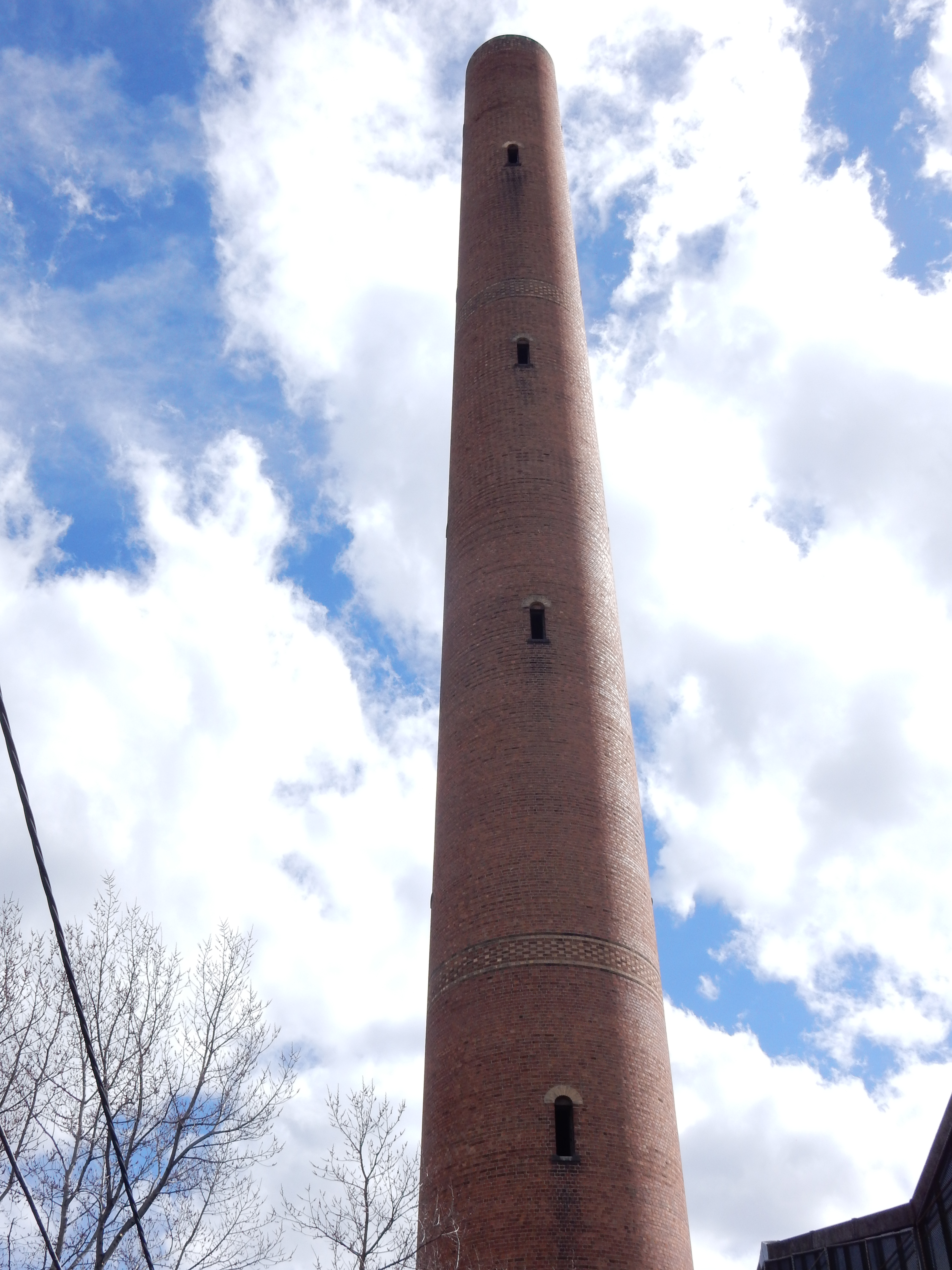
Walking diagonally across the Gardens, then left onto Gold St over Noone St and left onto Alexandra Parade brings you to the Shot Tower. The 263 ft – 80 metre – tall shot tower was built in 1882 to manufacture lead shot on what was then known as Reilly St. The tower was operated by the Coops family who also operated the Shot Tower now located within Melbourne Central Shopping Center. They are both listed on the Victorian Heritage Register. After visiting the Shot Tower it is an easy walk back to Hoddle St by continuing down Alexandra Parade.
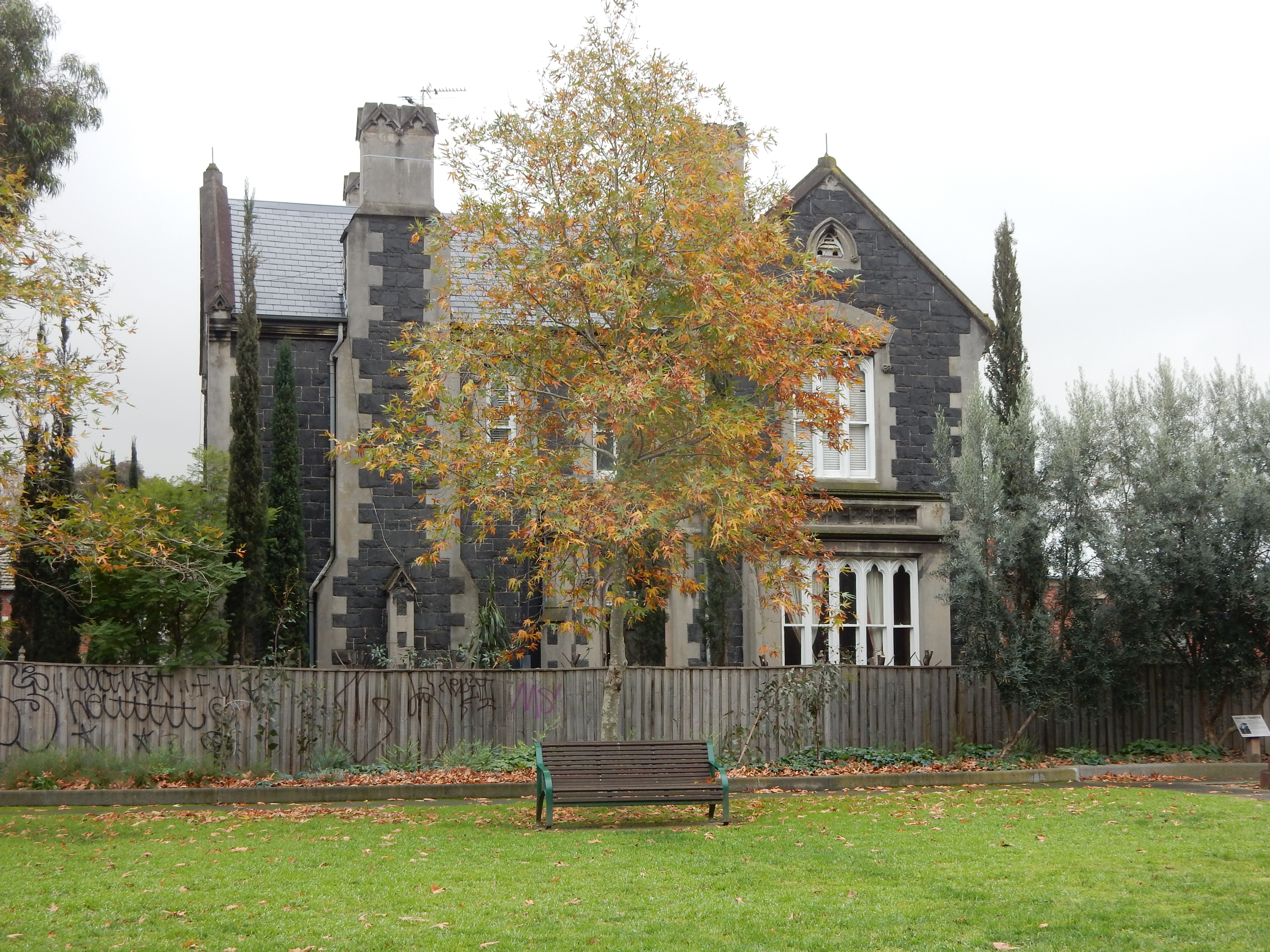
A surprise was St Philips Vicarage a beautiful building built in 1867. To the right of the Vicarage, St Philips Church was built of bluestone in 1865. In 1969 the church deemed to be unsustainable by the mainly local working class congregation of Collingwood, was demolished. The site became the small Collingwood Town Hall Reserve. The Vicarage built in the Gothic Revival structure is now considered to be of local historical importance.
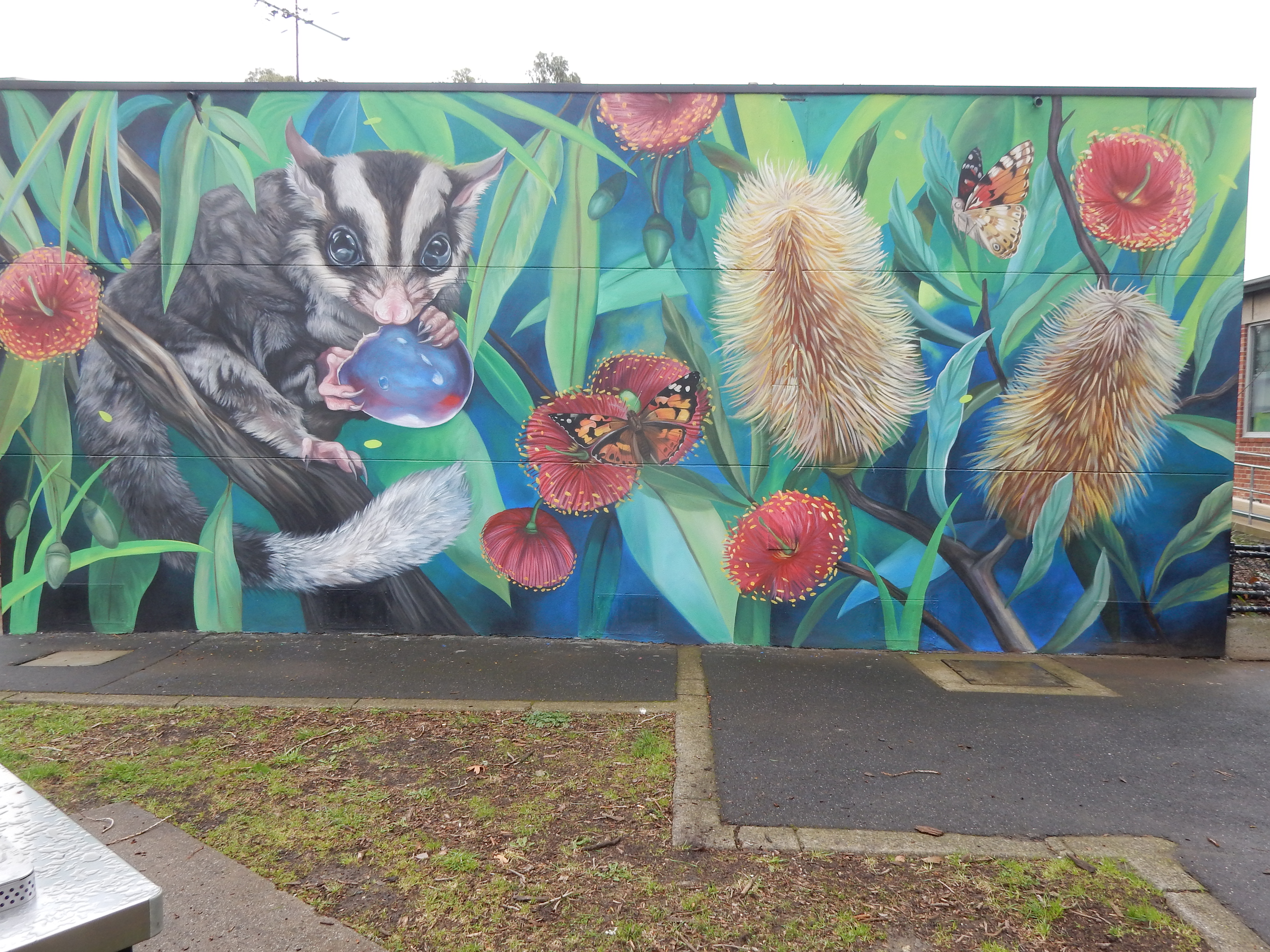
At the rear of the reserve between the Vicarage and Collingwood Town Hall are two beautiful wall murals.
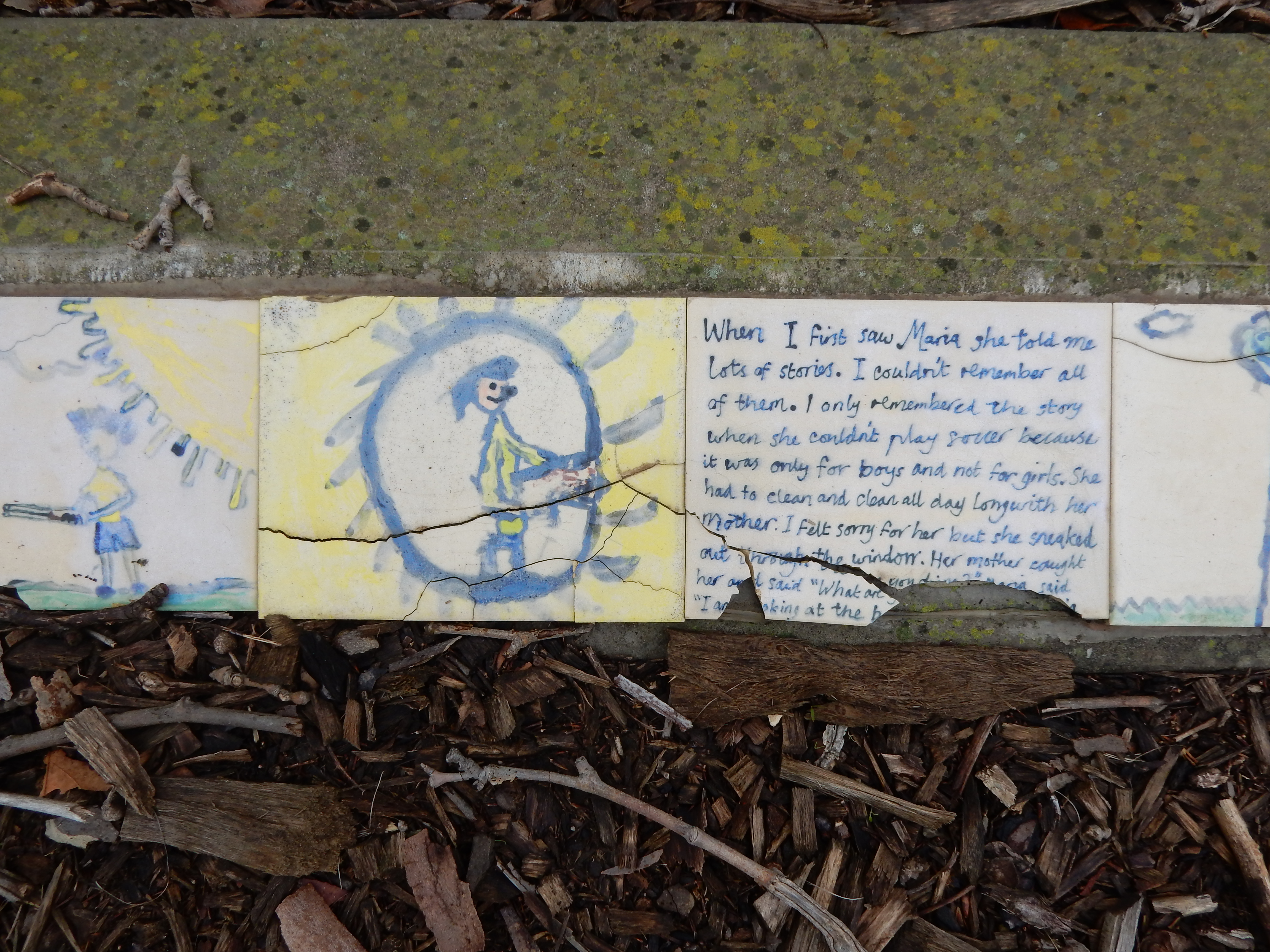
Along he path on the right hand side of the reserve are a series of tiles made by local primary school children after they visited an aged care facility. It is a shame that the tiles are falling into disrepair.
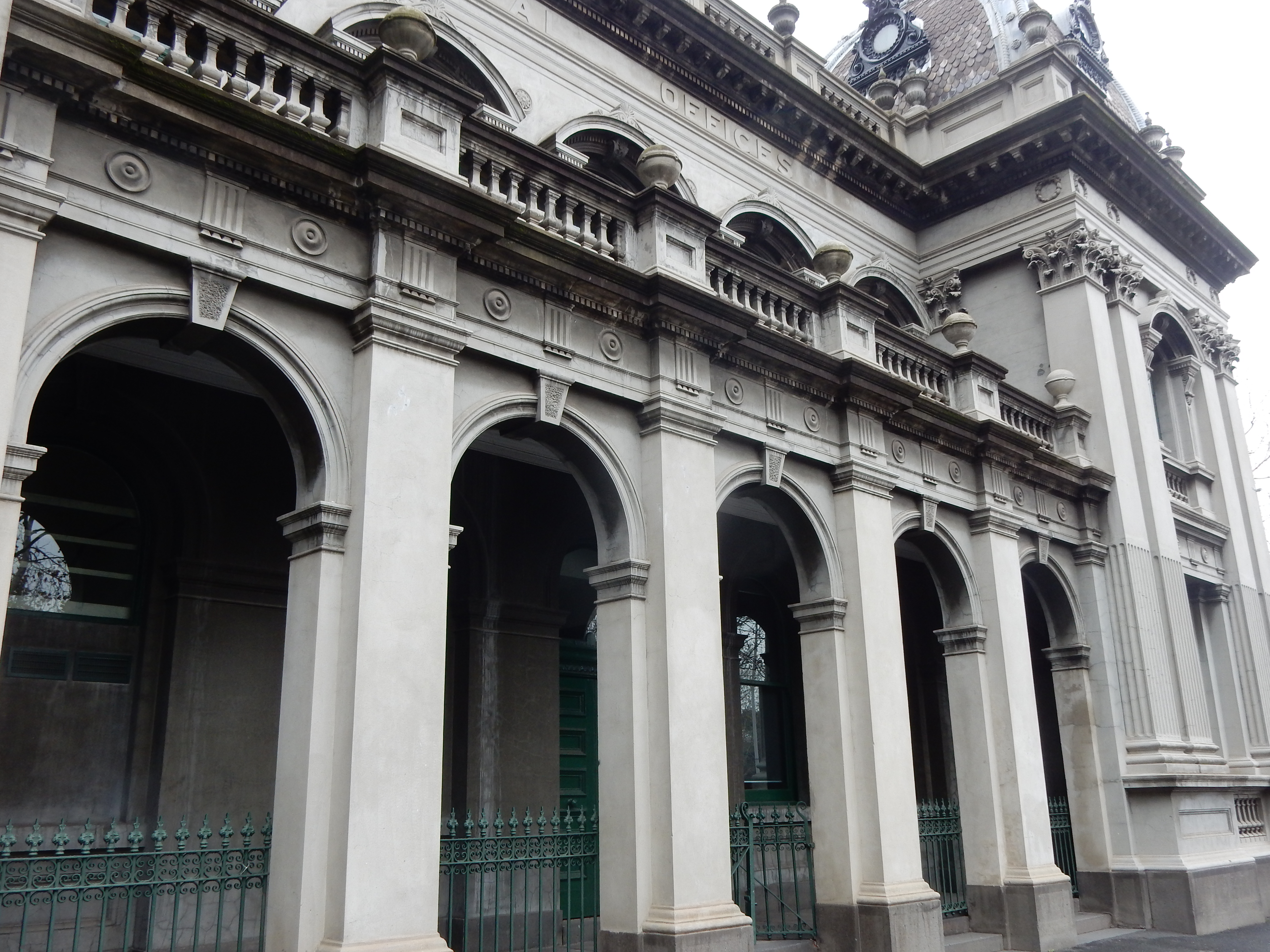
The Collingwood Town Hall is beautiful inside and out. Inside it has been modernised but it still retains a lot of the original charm and character.

Collingwood Town Hall
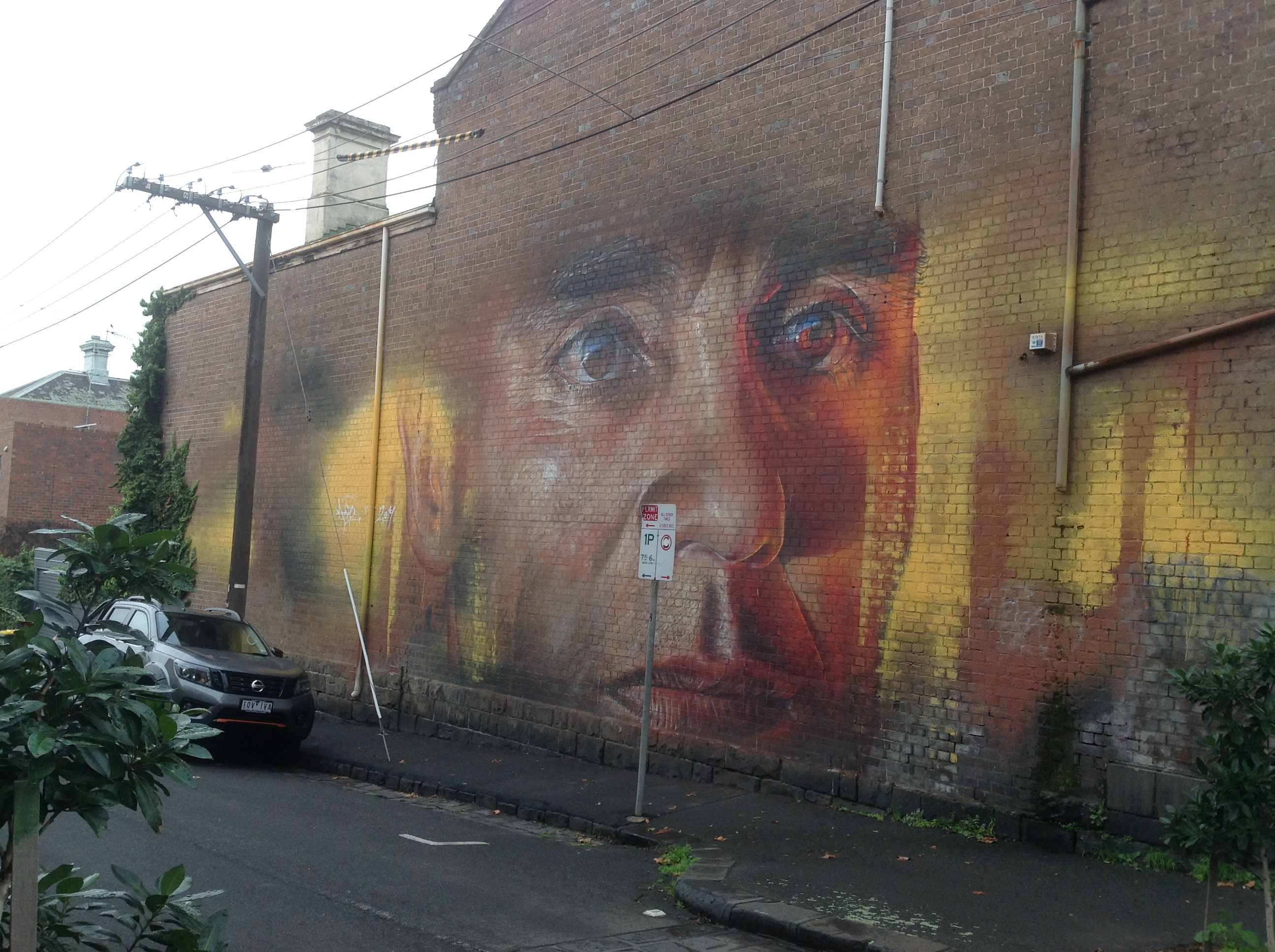
A random mural on a wall in Hoddle St.
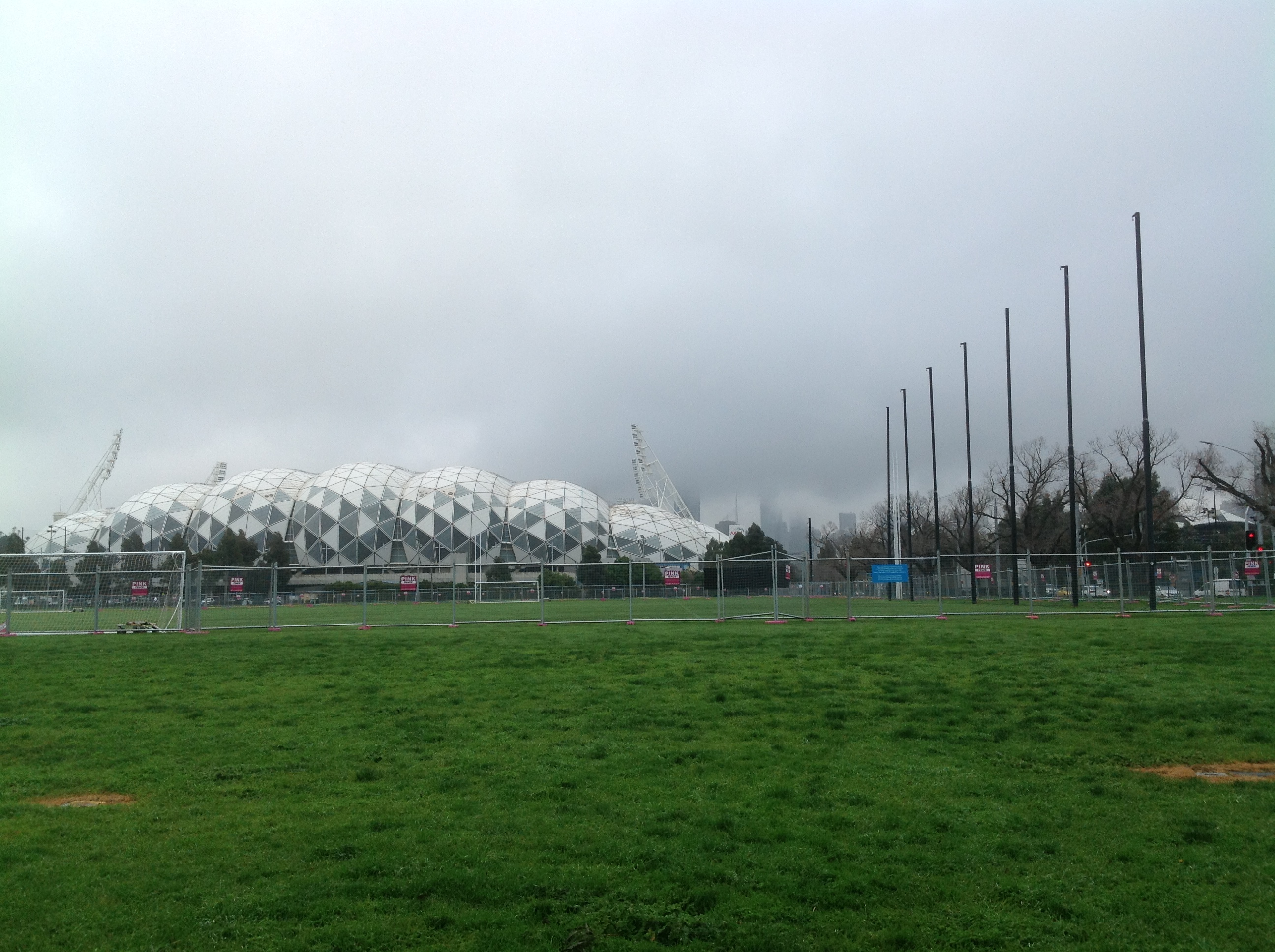
At Wellington Parade, Hoddle St ends and Punt Rd begins. Continuing down Punt Rd and over the maze of railway lines at Richmond Station I walked through Goschs Paddock with a view across to AAMI stadium. The first match held at the stadium was a Rugby League International in 2010. The stadium has won acclaim and awards for its architecture, engineering, construction and viewing experience.
In the 1870’s Goschs Paddock was known simply as the Cow Paddock. Around the turn of the century the land was leased to William Gosch as a holding area for his transport company’s horses.
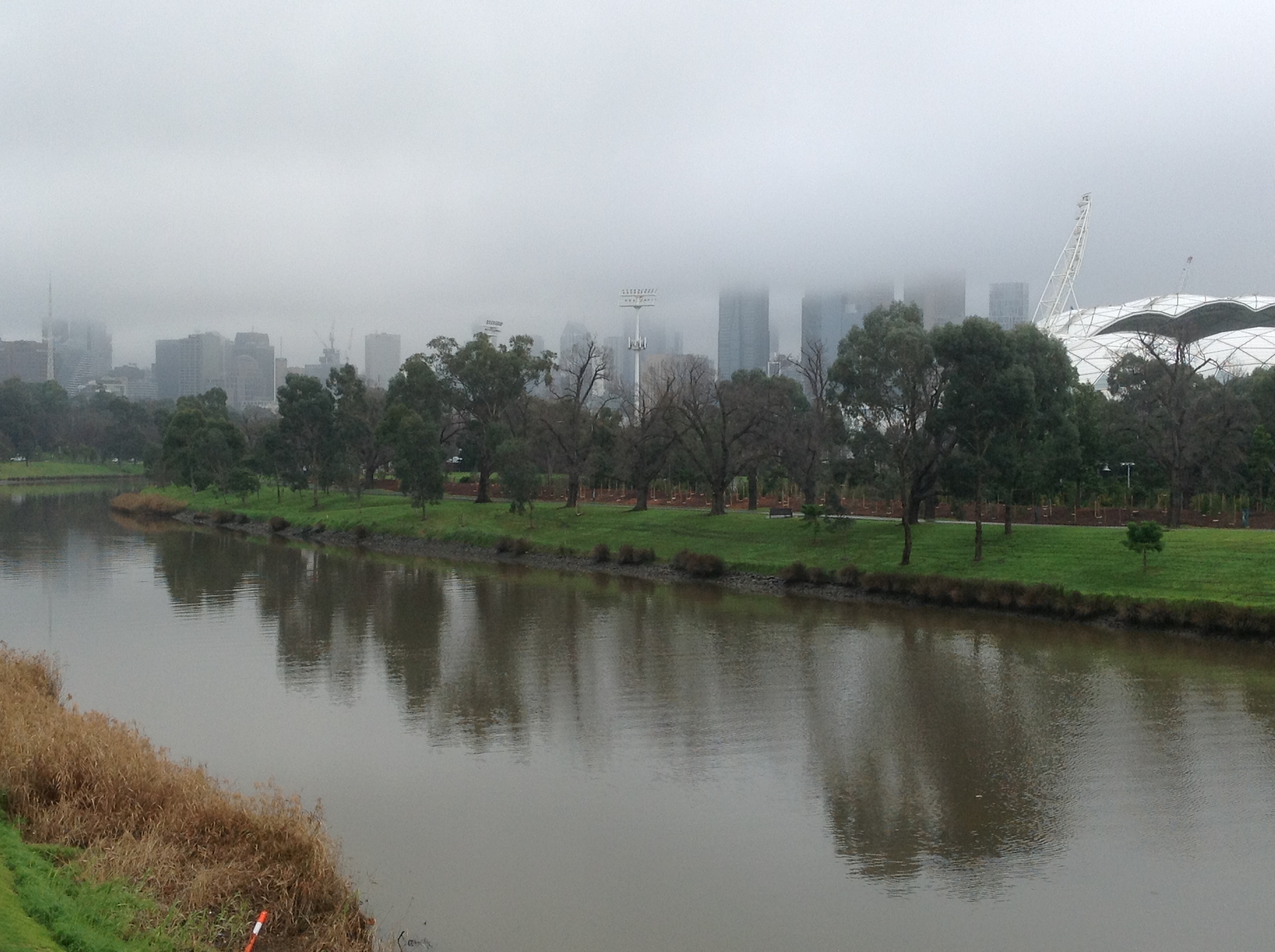
While crossing Morell Bridge the view across the Yarra of the city half hidden in the clouds was one of the true natural highlights of the day
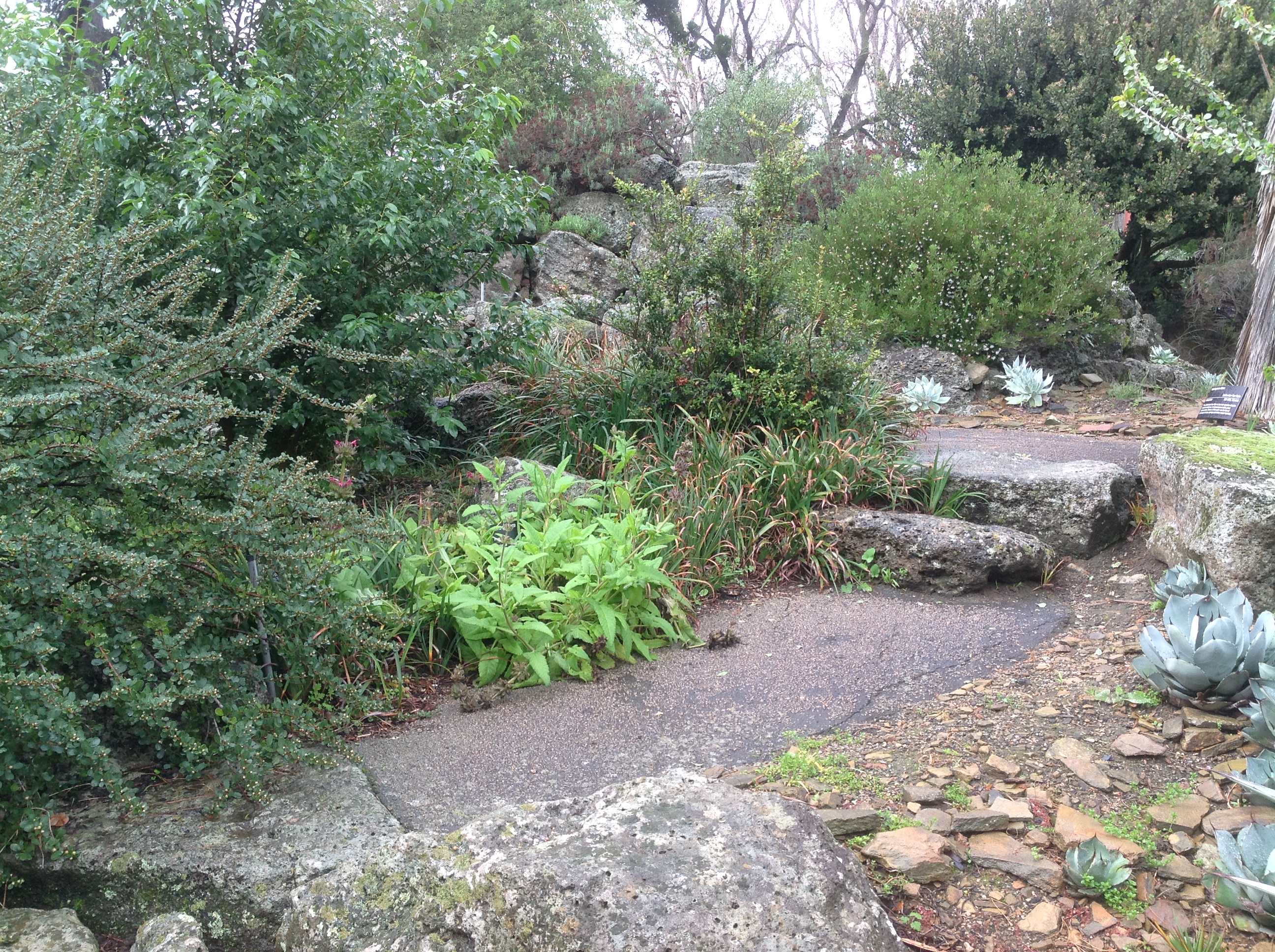
My thoughts were that it would be nice to stroll through the Royal Botanic Gardens on my way to MSAC. All I can say is that I should have known better. After wandering in many directions and becoming more confused I saw a sign for gate C and hoping it would pop me out onto a road, somewhere not to far from where I wanted to go, I headed that way. At least luck was with me there and somehow I made it to Albert Rd Drive and the Peter Norman statue which was my intended destination. And the statue didn’t disappoint.

A life sized statue of Peter Norman stands proudly near the entrance of the Melbourne Sports Centers Lakeside Stadium. At his feet a fresh bunch of native blue gum leaves and delicate pink flowers. On his back fittingly his number was 111. A plaque tells his story and a photo shows his story. On his left chest he wore a badge in solidarity that read Olympic Project For Human Rights.
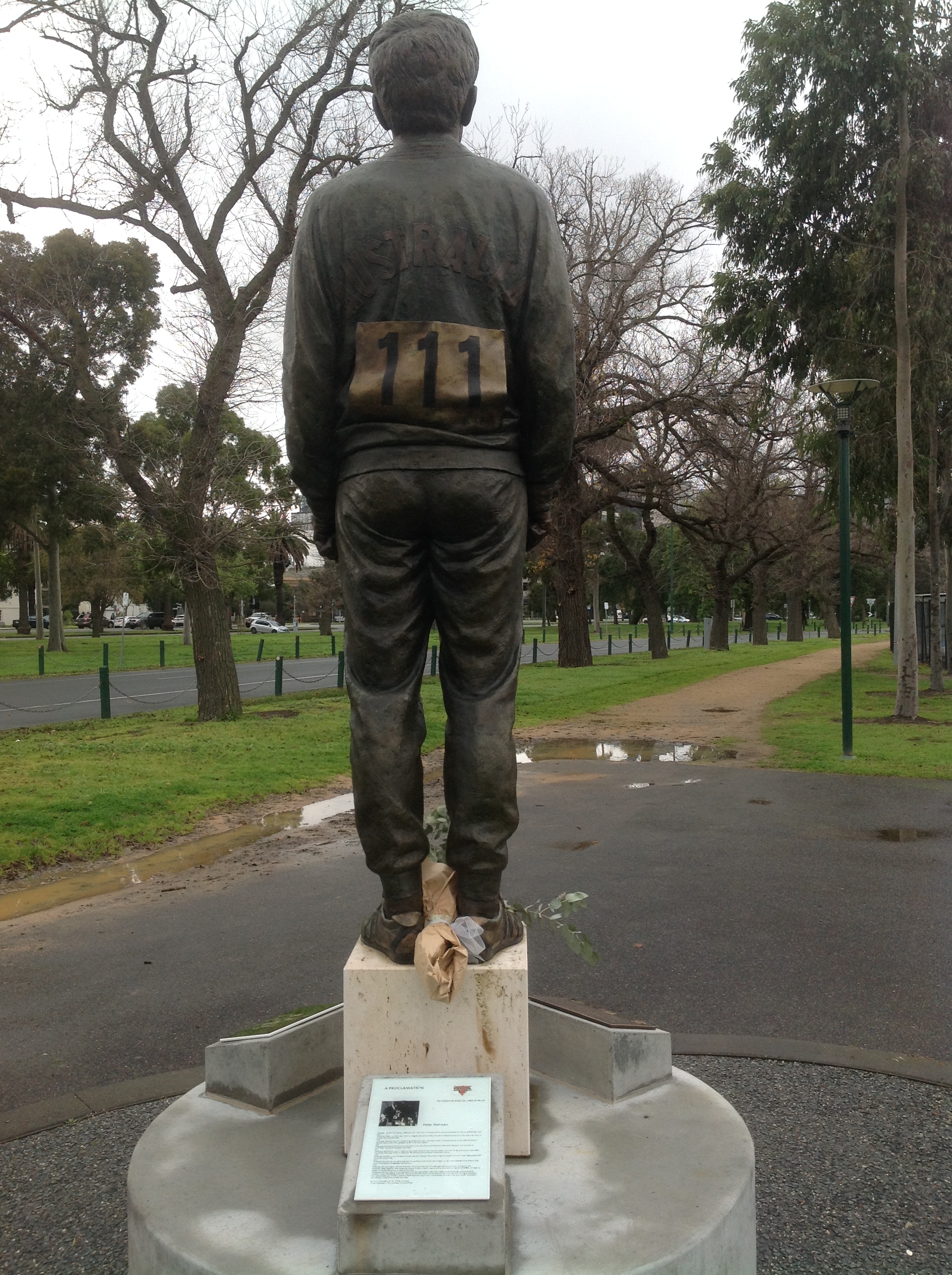
In 1968 at the Mexico Olympics Peter Norman won a silver medal in the Mens 200 metre track in a time of 20.06. An Australian record that still stands. He was the third man on the podium during the infamous black power salute of Tommie Smith and John Carlos.
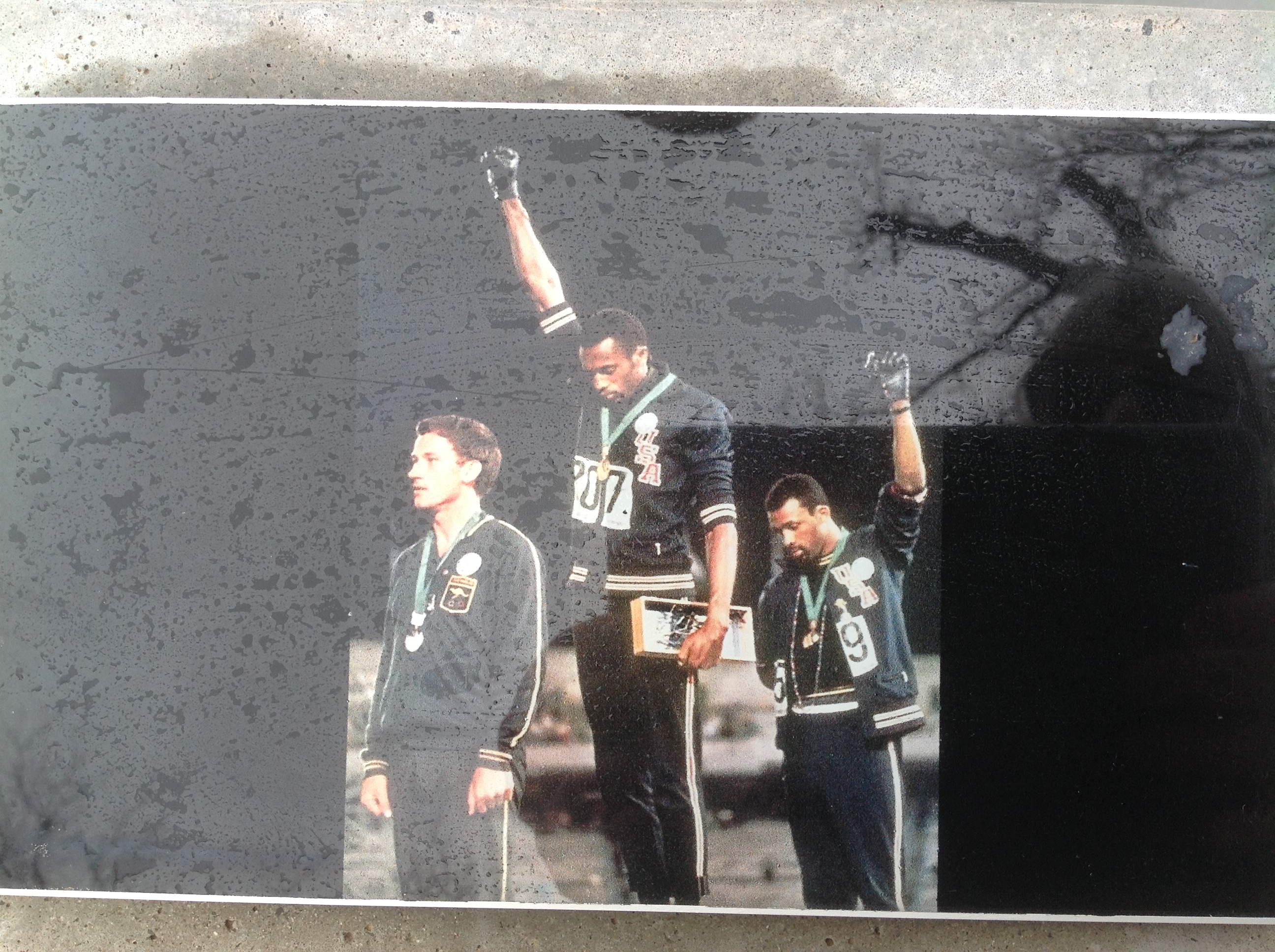
In 2005 San Jose State University, USA erected a statue of Smith and Carlos depicting their famous gesture. It was Peter Norman who suggested that his place on the podium be left empty so that others could stand in his place in solidarity. Truly an inspirational man.
Leaving this incredible history behind I walked the 300 metres to Clarendon St and then the 3 k’s to Boundary Rd in Port Melbourne for my ride home. Approx. 15 k for the day.